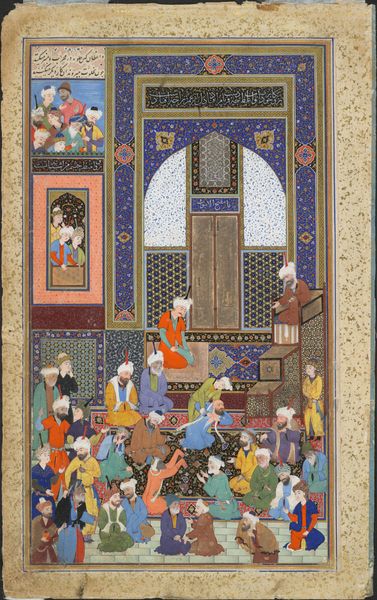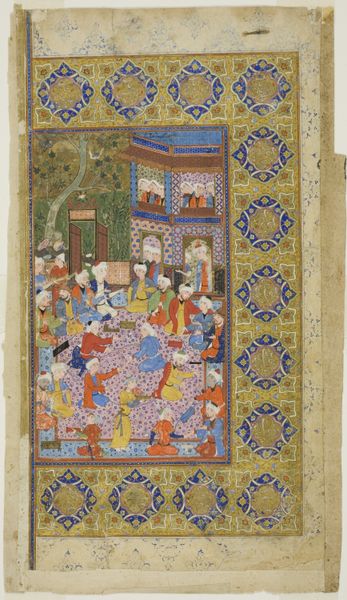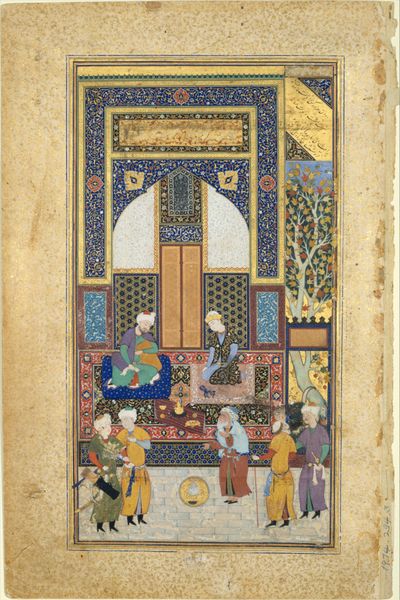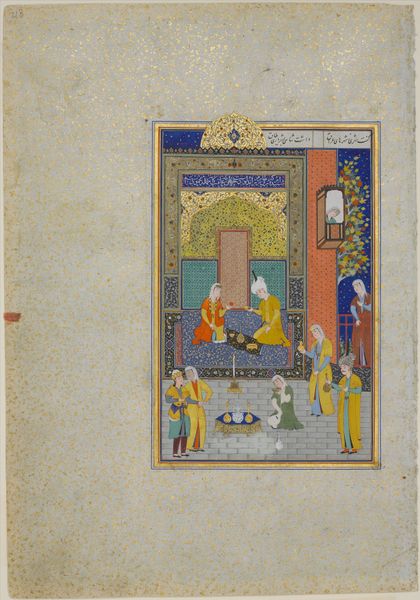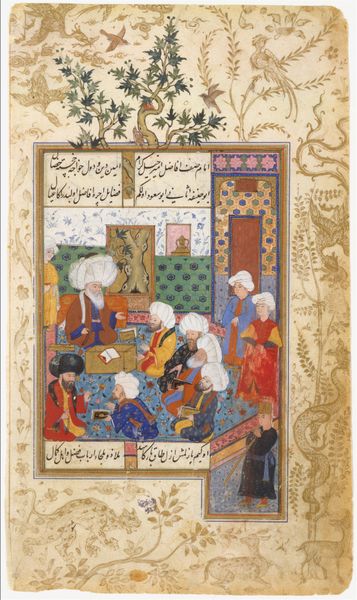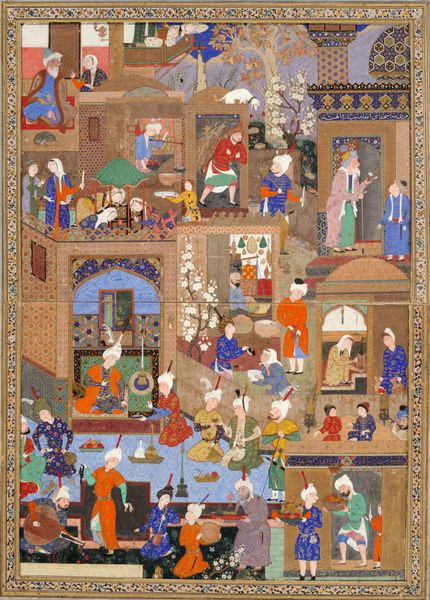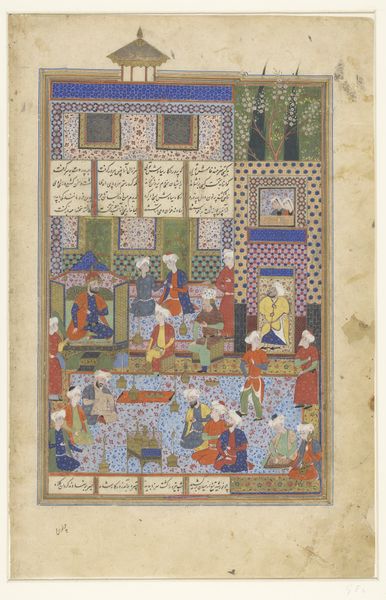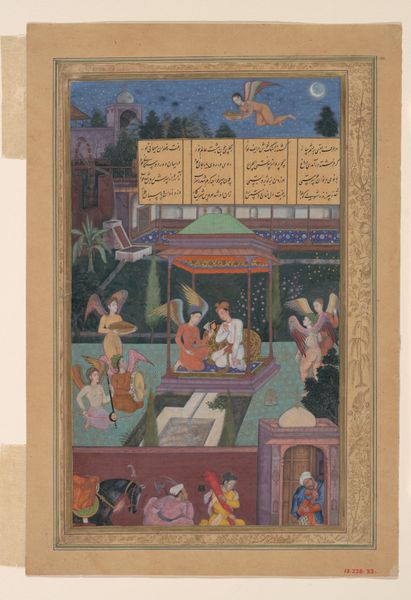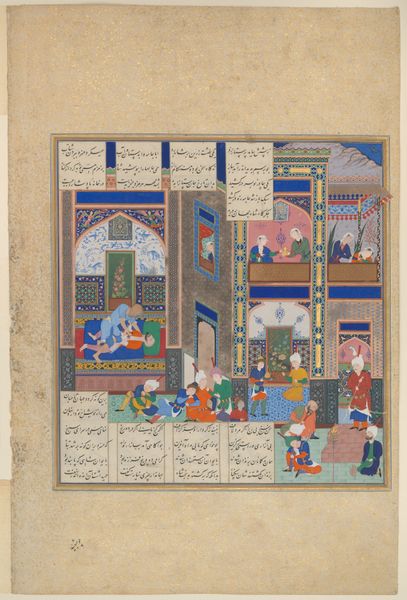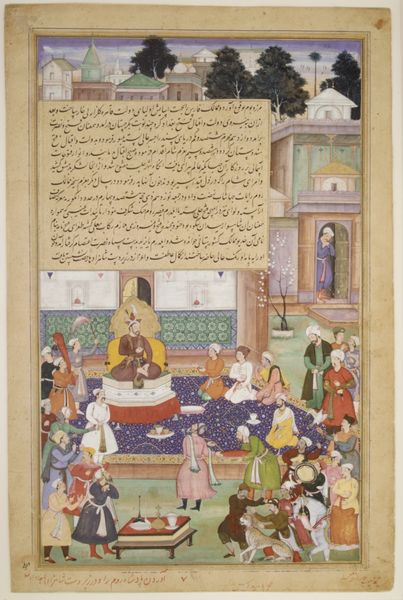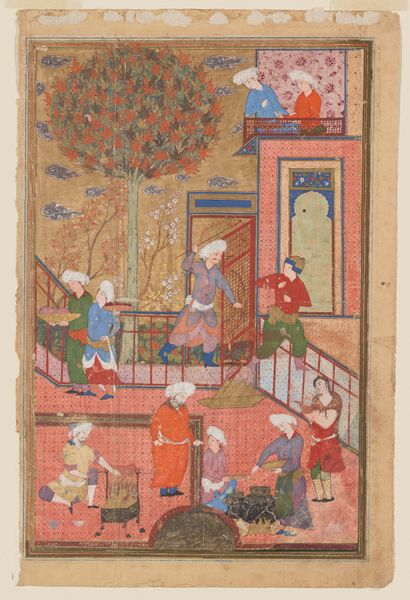
"Laila and Majnun in School", Folio 129 from a Khamsa (Quintet) of Nizami of Ganja 1500 - 1550
0:00
0:00
painting, watercolor
#
portrait
#
water colours
#
narrative-art
#
painting
#
book
#
watercolor
#
group-portraits
#
islamic-art
#
miniature
Dimensions: Painting: H. 7 1/2 in. (19.1 cm) W. 4 1/2 in. (11.4 cm) Page: H. 12 5/8 in. (32.1 cm) W. 8 3/4 in. (22.2 cm) Mat: H. 19 1/4 in. (48.9 cm) W. 14 1/4 in. (36.2 cm)
Copyright: Public Domain
Curator: Here we have a watercolor and ink folio dating to 1500-1550, attributed to Nizami, titled "Laila and Majnun in School", from a Khamsa, which is Persian for Quintet. It's currently held at the Metropolitan Museum of Art. Editor: It feels incredibly lively, almost buzzing with youthful energy despite the seemingly serious subject matter of a classroom. The vibrant colours pop against the gold leaf background, and the composition feels so intricately balanced. Curator: This piece offers a window into the socio-cultural context of education and storytelling in the Islamic world during the early 16th century. The story of Laila and Majnun was incredibly popular, often seen as an allegory for divine love, so to picture it within a school is to subtly elevate the pursuit of knowledge. Editor: Exactly. Looking closer, I notice the carefully arranged figures. Each one seems deliberately placed to draw the eye across the page, moving between clusters of students and the authority figures. There is an incredible harmony in its complex design. Curator: And note how the architectural elements – the archways, the tiled walls – create this sense of organized space and visual complexity. Also consider how such miniatures served a crucial role in illustrating and disseminating stories and philosophical ideas within elite circles. Editor: And the way the artist uses perspective—or, rather, eschews conventional perspective—adds to its dreamlike quality. The scene feels both intimate and expansive, drawing you into the heart of the story without being restricted by realism. The water colours definitely provide a light feel to the picture, and they allow a big array of colors for all elements in the piece. Curator: Precisely. That flattening of space pushes beyond representation, inviting interpretation. Think about who commissioned this Khamsa and the social function it was meant to fulfill: instruction, entertainment, even validation of power and authority through visual display. Editor: I’m struck by the duality of order and chaos, really, a balance that’s both visually arresting and narratively compelling. After appreciating the colours, this helps appreciate its purpose too. Curator: A synthesis reflecting the layers of meaning within the "Laila and Majnun" narrative itself. Editor: It certainly elevates a standard classroom setting and brings life into classic works of Islamic art.
Comments
No comments
Be the first to comment and join the conversation on the ultimate creative platform.
